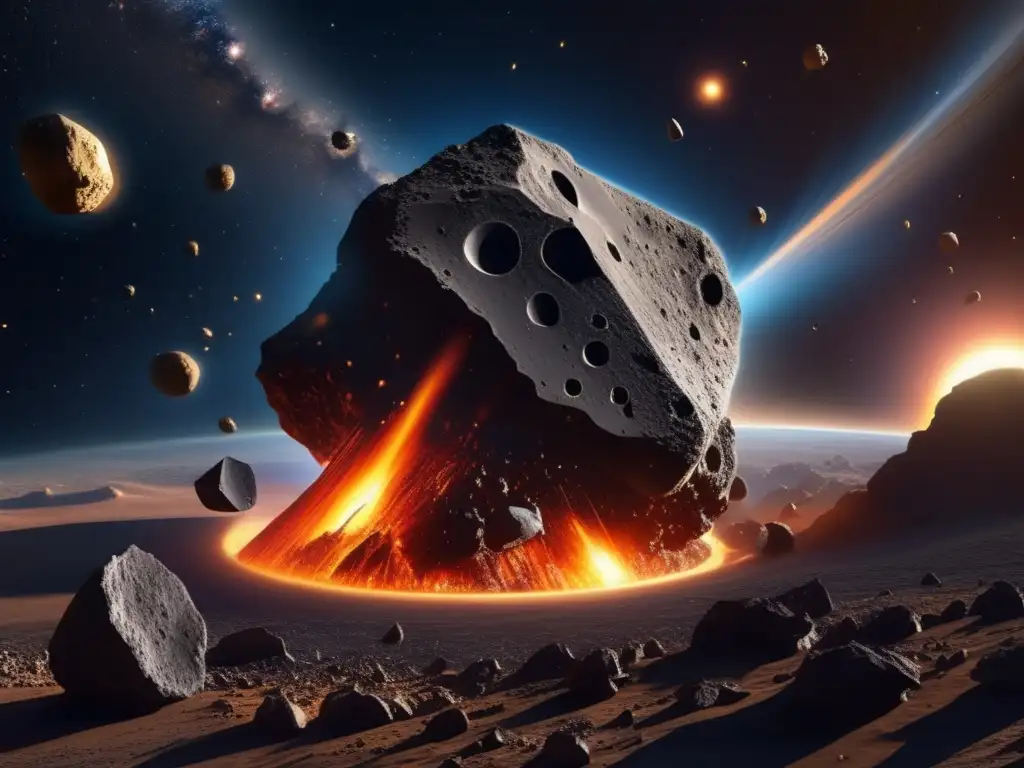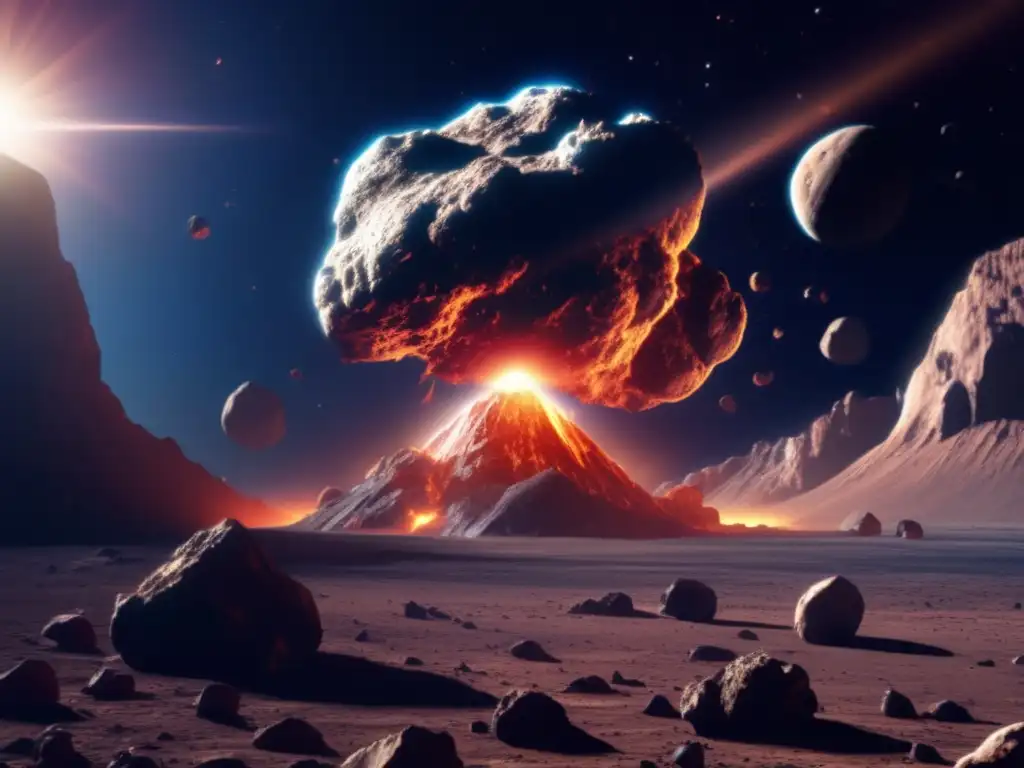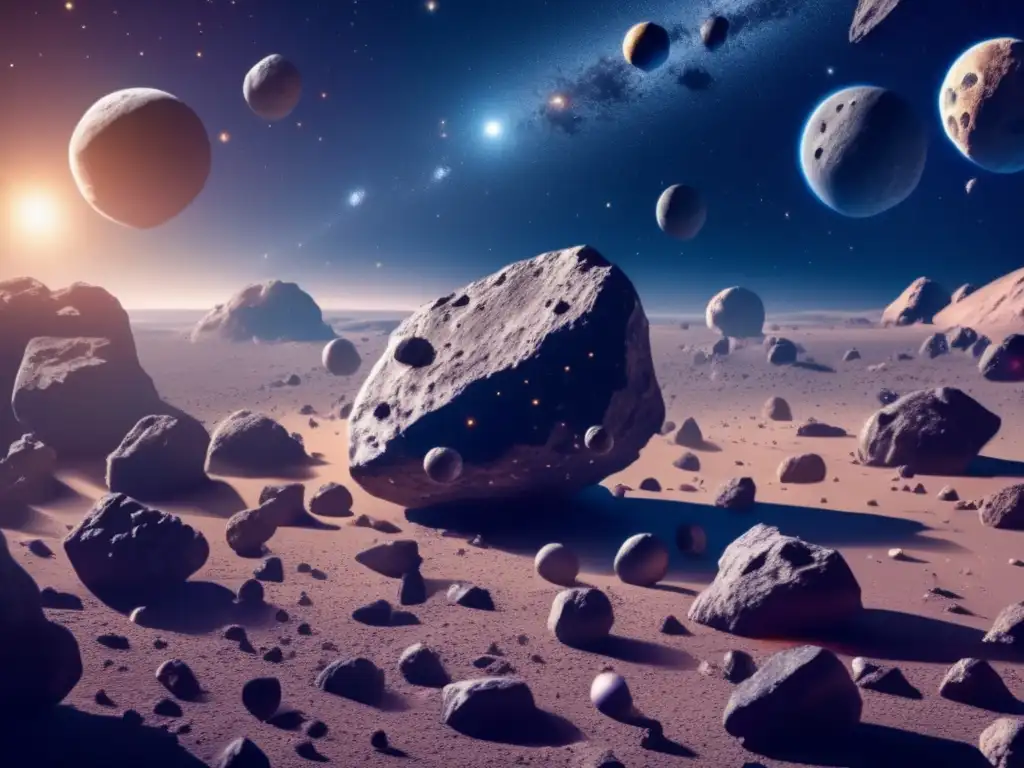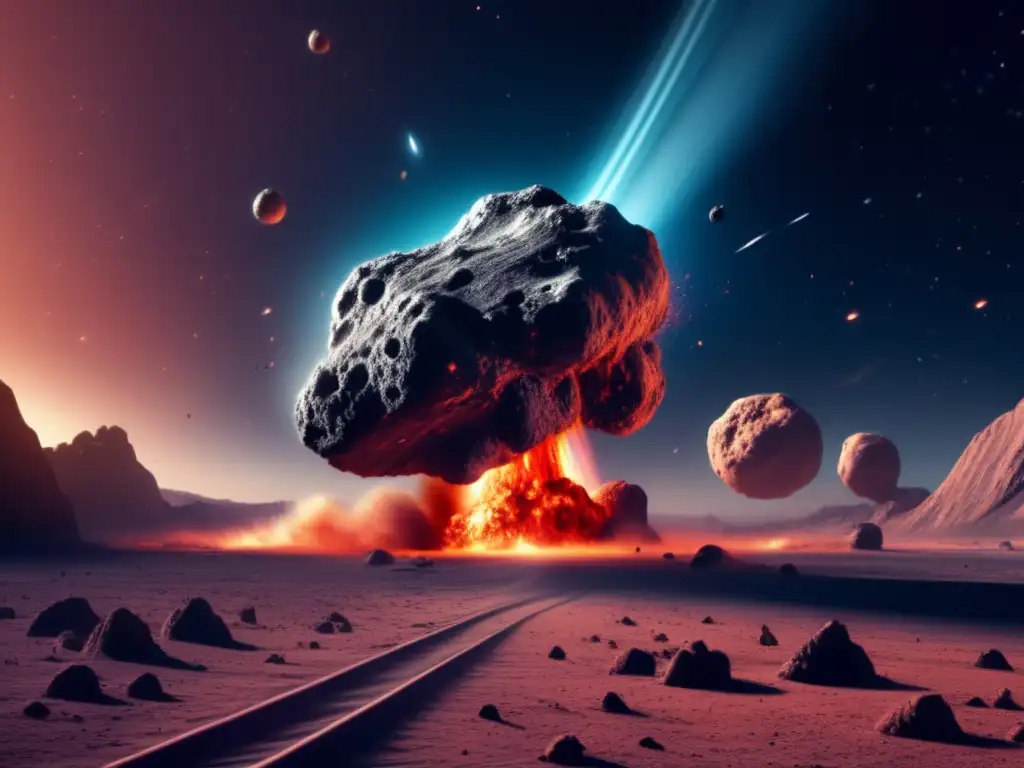The Fallout Of Falling Stars: Exploring Asteroid Debris

Introduction
Asteroids have been a topic of fascination for scientists and enthusiasts alike. These celestial bodies, made up of rock, metal, and other materials, are remnants from the formation of our Solar System and continue to provide valuable insights into its history. However, asteroids can also pose a serious threat to our planet. When an asteroid collides with Earth, it can cause devastating effects, including widespread destruction and even mass extinction events. One of the most significant consequences of an asteroid impact is the formation of debris, which can cause further harm and lasting effects. In this article, we will explore the fallout of falling stars by examining the debris left behind by asteroid impacts.
The Formation of Asteroid Debris

Impact Craters
When an asteroid collides with Earth, it creates a massive explosion that can leave a large crater. The impact crater can vary in size, depending on the size and speed of the asteroid, as well as the composition of the ground it hits. The force of the impact can cause the surrounding rocks to break apart and become ejected from the site, forming a debris field.
Ejecta
The material ejected from the impact site is known as ejecta. Ejecta includes a variety of materials, ranging from small dust particles to large boulders. The speed of the ejected material can range from several hundred to thousands of kilometers per hour. The most dangerous component of ejecta is the smaller, faster-moving particles that can travel far distances from the impact site and cause secondary impacts.
Tsunamis
In some cases, an asteroid impact can occur in the ocean, causing massive waves, known as tsunamis. These waves can travel long distances and cause significant damage, including erosion of the coastline and destruction of infrastructure. Tsunamis also contribute to the formation of debris, as the powerful waves can pick up and carry large amounts of sediment and rocks as they move inland.
The Effects of Asteroid Debris

Environmental Effects
The formation of debris from asteroid impacts can have lasting environmental effects. The impact can cause widespread destruction to the surrounding landscape, including deforestation, soil erosion, and changes in the topography. The debris field can also impact local ecosystems by altering soil composition and limiting access to resources for plants and animals.
Secondary Impacts
The smaller, faster-moving particles that make up ejecta can travel far distances from the impact site and cause secondary impacts. These impacts can occur hundreds of kilometers away from the original impact site and cause additional damage and destruction. Secondary impacts can also distribute debris over a wider area, increasing the impact and damage caused by the initial asteroid collision.
Human Consequences
Asteroid impacts and the resulting debris can have significant consequences for human populations. The direct effects of an asteroid impact can include loss of life and property damage. The secondary impacts can impact agriculture and food production, leading to starvation and economic disruption. Large impacts can also cause global climatic changes, including a "nuclear winter" effect, which could lead to a global mass extinction event.
How to Mitigate the Effects of Asteroid Debris

Early Warning Systems
One of the most effective ways to mitigate the effects of asteroid debris is through early warning systems. These systems use telescopes and other monitoring devices to detect and track asteroids that may pose a threat to Earth. Once an asteroid is identified as a potential threat, early warning systems can provide advanced notice, allowing for evacuation and other preparations that can mitigate the impact of the asteroid.
Impact Prevention
Another way to mitigate the effects of asteroid debris is through impact prevention. This can be achieved through a variety of methods, including deflecting the asteroid off its course or breaking it up into smaller pieces that are less likely to cause significant damage. There are several proposed methods for impact prevention, including kinetic impactors, gravity tractors, and nuclear devices.
Disaster Preparedness
In addition to early warning systems and impact prevention, disaster preparedness can also help mitigate the effects of asteroid debris. Governments and communities can develop emergency plans for responding to an asteroid impact, including evacuation routes, emergency medical care, and relief efforts for affected populations. Disaster preparedness can also include measures to reduce the impact of secondary effects, such as tsunamis or fires caused by the impact.
Frequently Asked Questions

-
What is asteroid debris?
Asteroid debris is material left behind after an asteroid collides with Earth. It includes impact crater material, ejecta, and other materials that can be spread over a wide area.
-
What are the consequences of asteroid debris?
Asteroid debris can have significant environmental, economic, and human consequences. It can cause deforestation, soil erosion, and secondary impacts that can impact agriculture and food production.
-
How can we mitigate the effects of asteroid debris?
We can mitigate the effects of asteroid debris through early warning systems, impact prevention, and disaster preparedness.
-
What are some proposed methods for impact prevention?
Proposed methods for impact prevention include kinetic impactors, gravity tractors, and nuclear devices.
-
What is the role of governments and communities in mitigating the effects of asteroid debris?
Governments and communities can play a vital role in mitigating the effects of asteroid debris by developing emergency plans, providing relief efforts, and implementing measures to reduce the impact of secondary effects.
Conclusion
Asteroid impacts and the resulting debris represent a significant threat to our planet and human populations. The fallout of falling stars can have lasting environmental, economic, and human consequences. However, through early warning systems, impact prevention, and disaster preparedness, we can mitigate the effects of asteroid debris and protect our planet. It is important that we continue to study asteroids and their impact on our planet, so that we can better understand and prepare for potential asteroid collisions.
Thank you for reading this article on the fallout of falling stars. We encourage you to share your thoughts and engage with www.asteroidrealm.com by subscribing, sharing this article on social networks, or leaving comments below.
Additional Resources

For more information on asteroids and their impact on our planet, please visit the following resources:
- NASA Planetary Defense Coordination Office
- ESA Space Debris
- Lunar and Planetary Institute - How to Protect Earth's Atmosphere from Future Asteroid Impacts
 From Dinosaurs To Mammals: Asteroid Impact And Evolution
From Dinosaurs To Mammals: Asteroid Impact And Evolution Asteroid Impacts And The Oceans: Tsunamis From The Sky
Asteroid Impacts And The Oceans: Tsunamis From The Sky Gauging The Threat: Asteroid Sizes And Impact Severity
Gauging The Threat: Asteroid Sizes And Impact SeverityIf you want to discover more articles similar to The Fallout Of Falling Stars: Exploring Asteroid Debris, you can visit the Asteroid Impacts category.
Leave a Reply

Articulos relacionados: